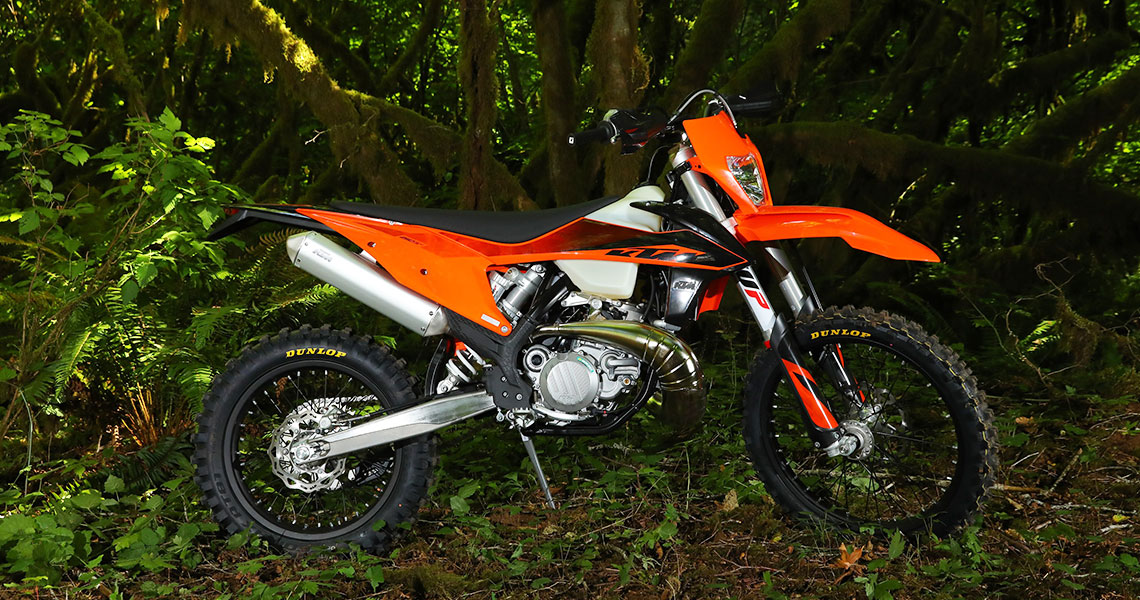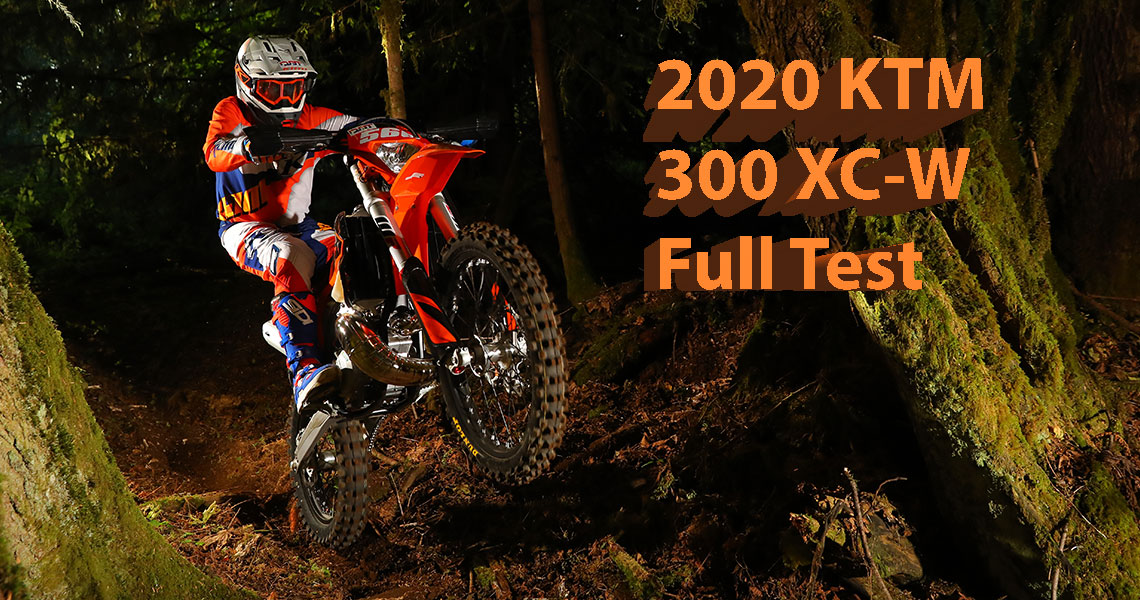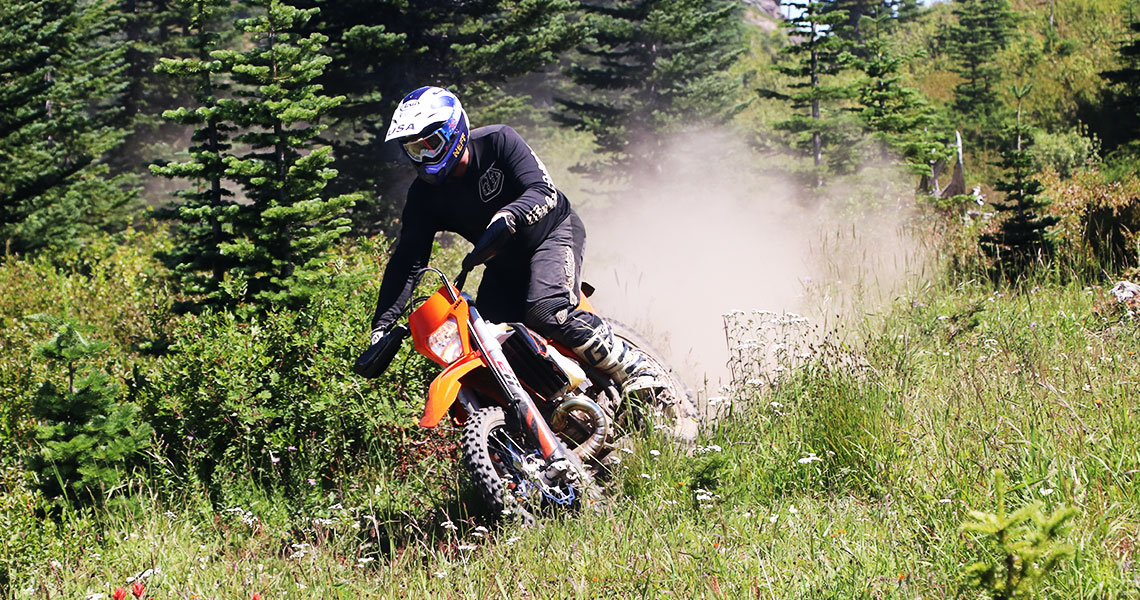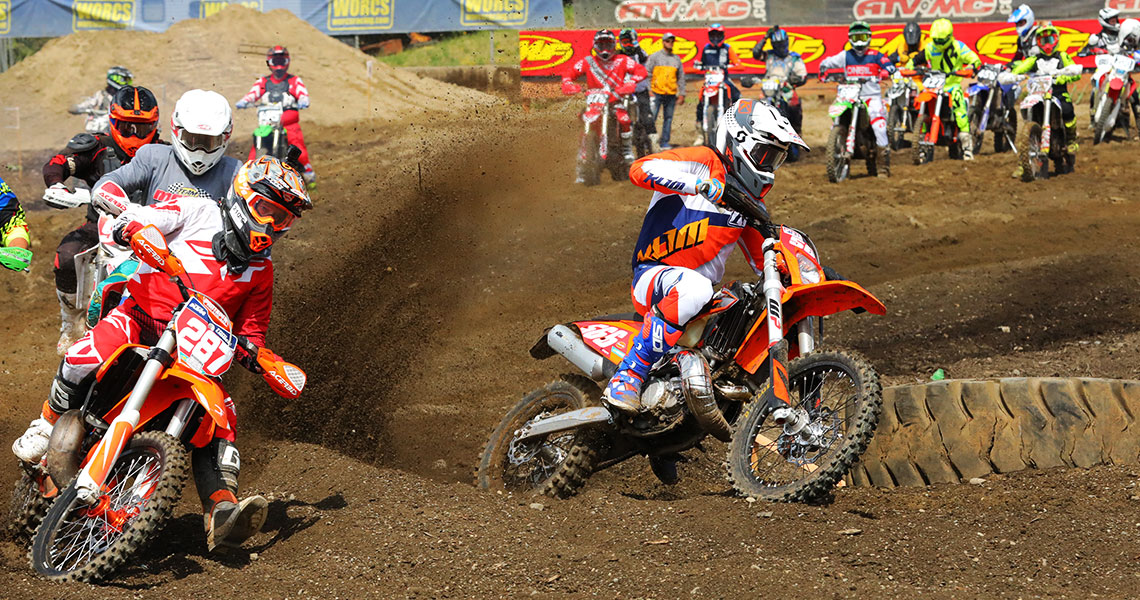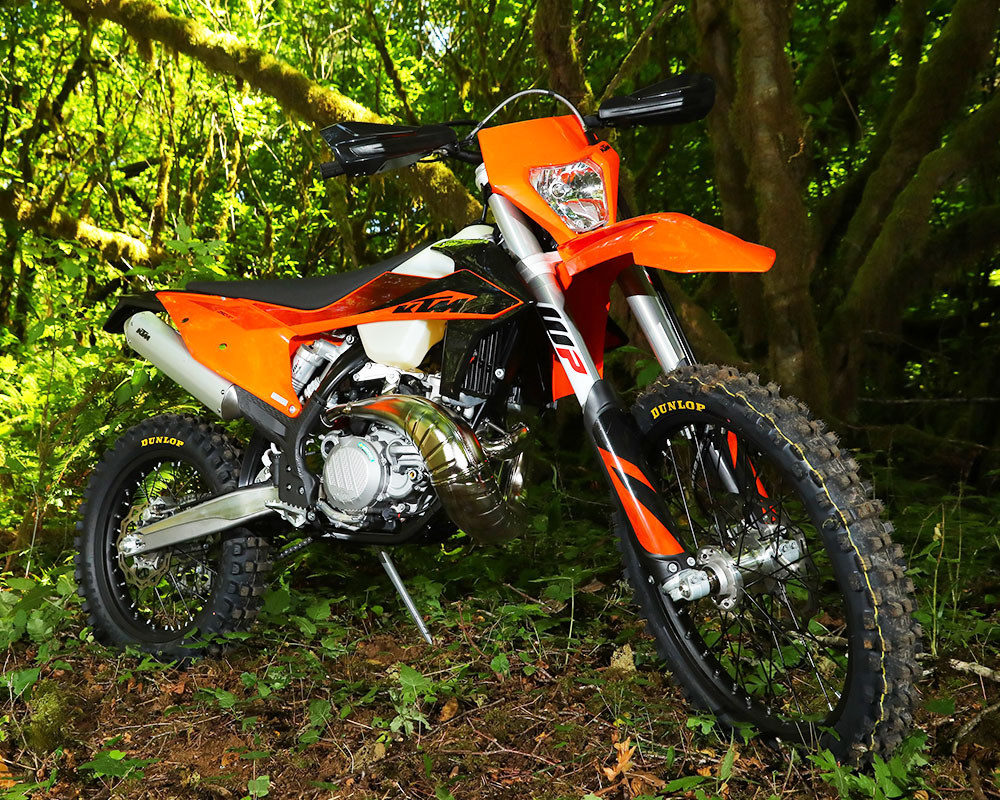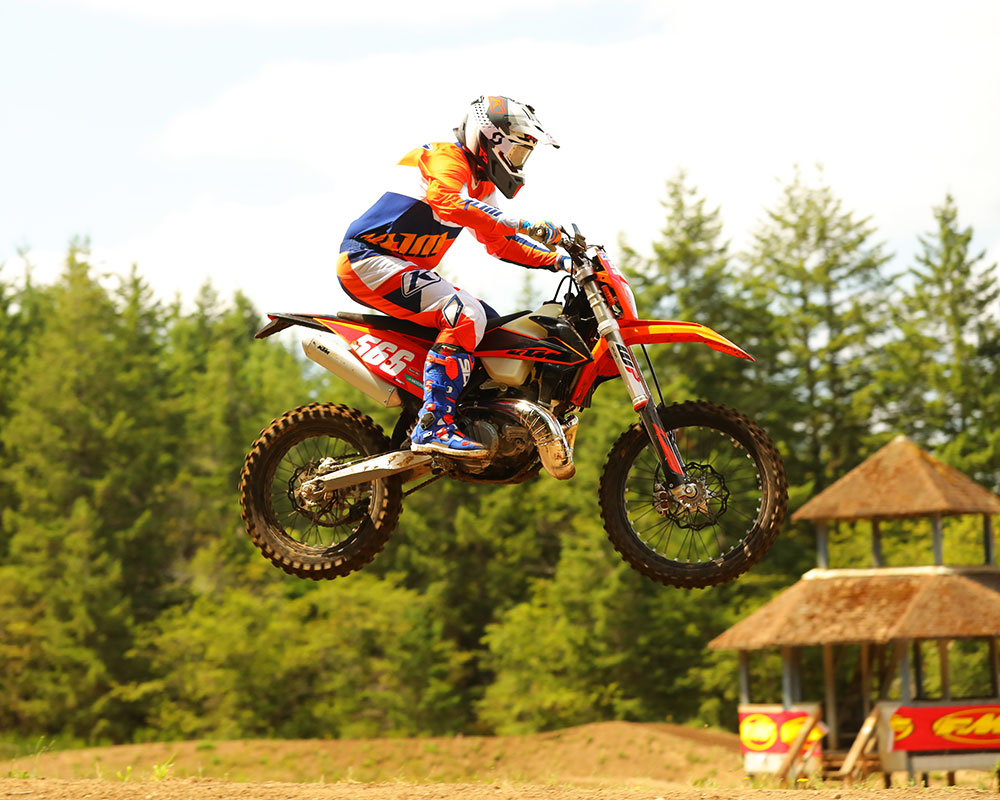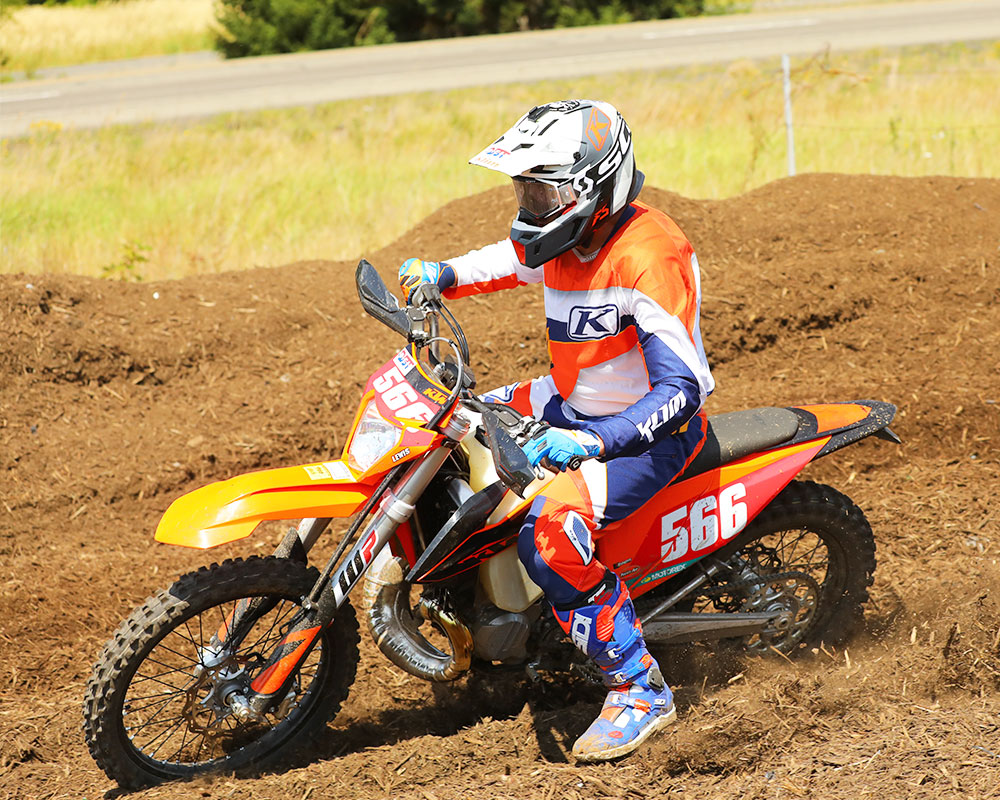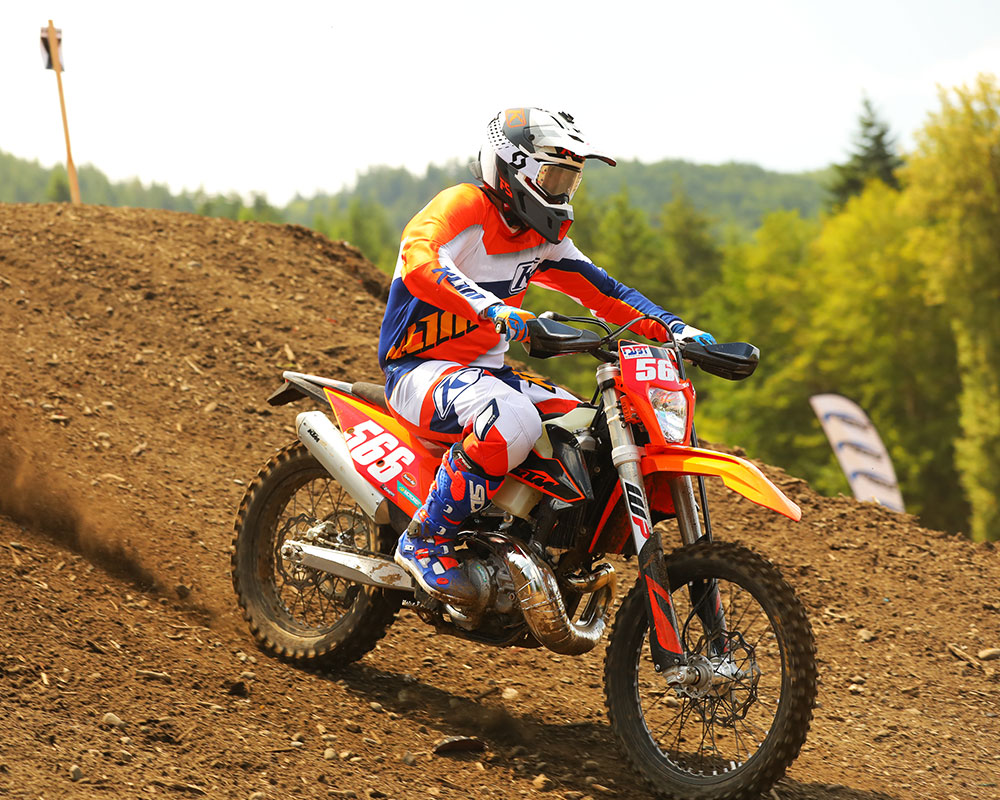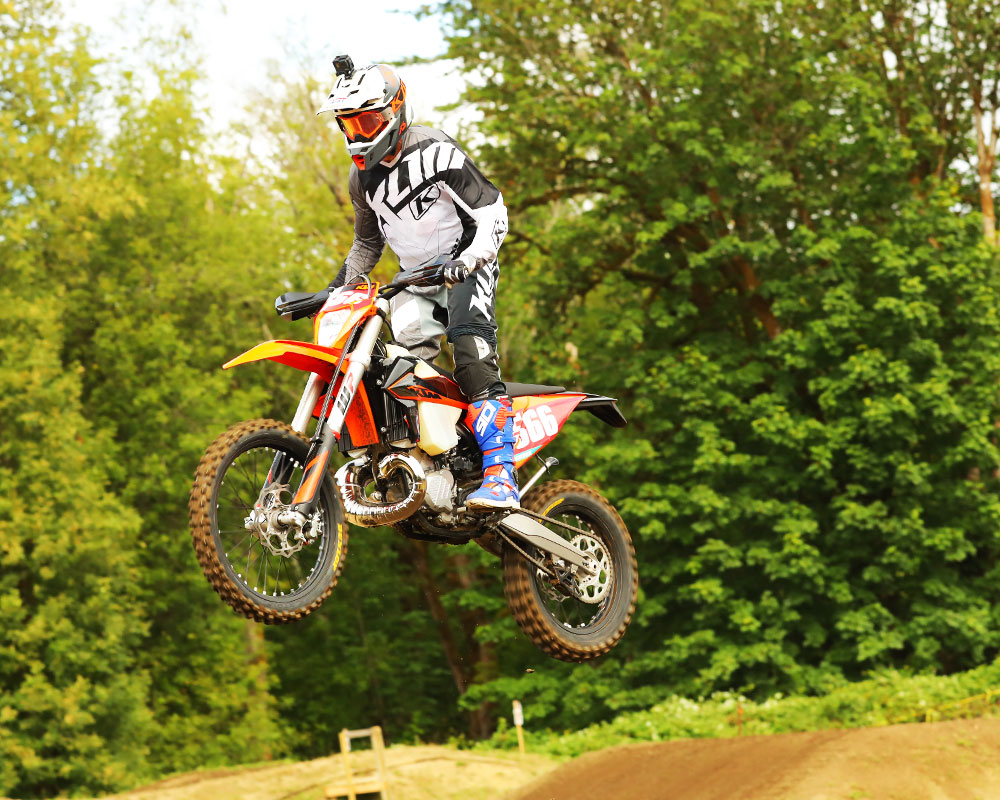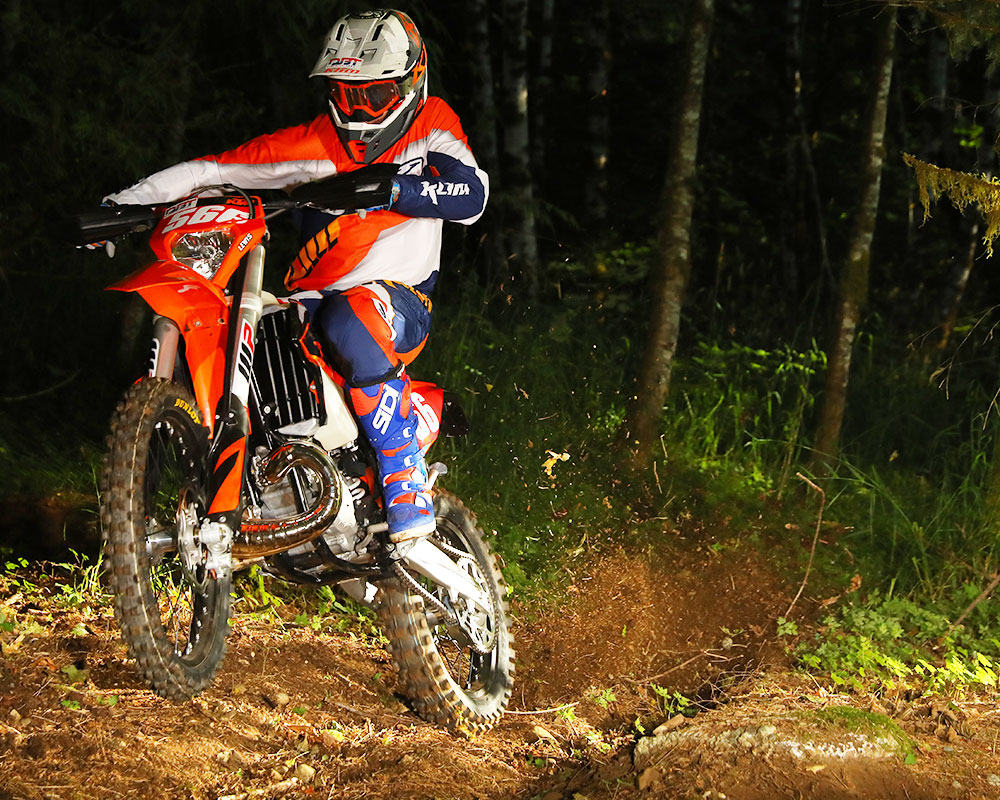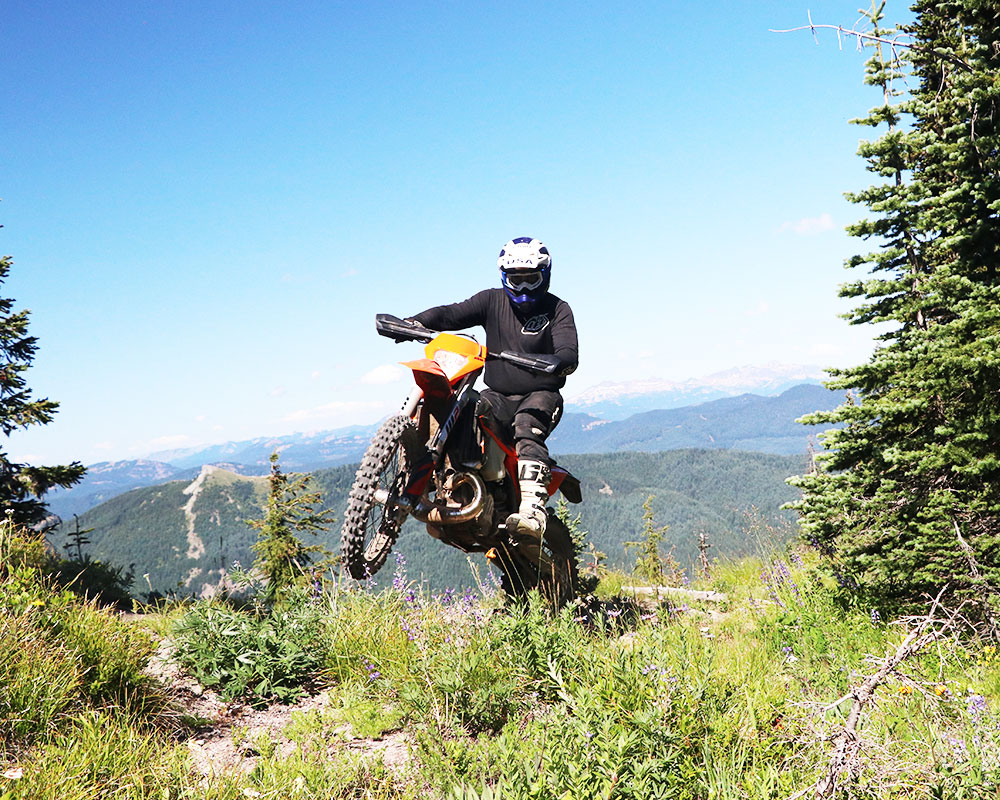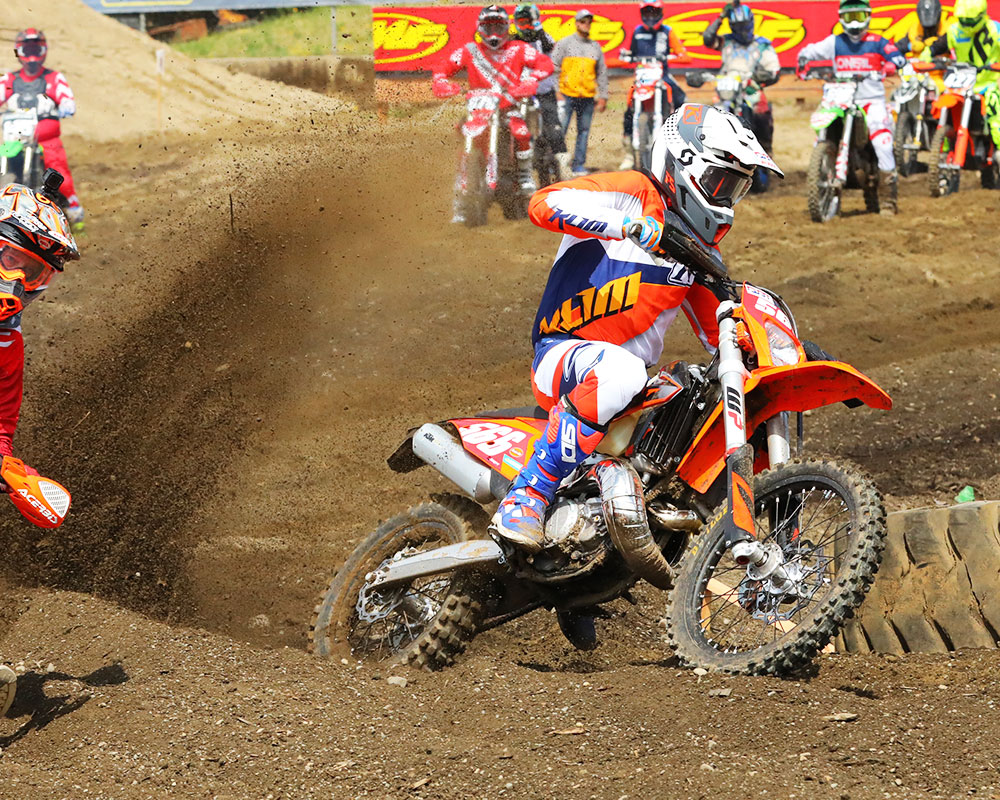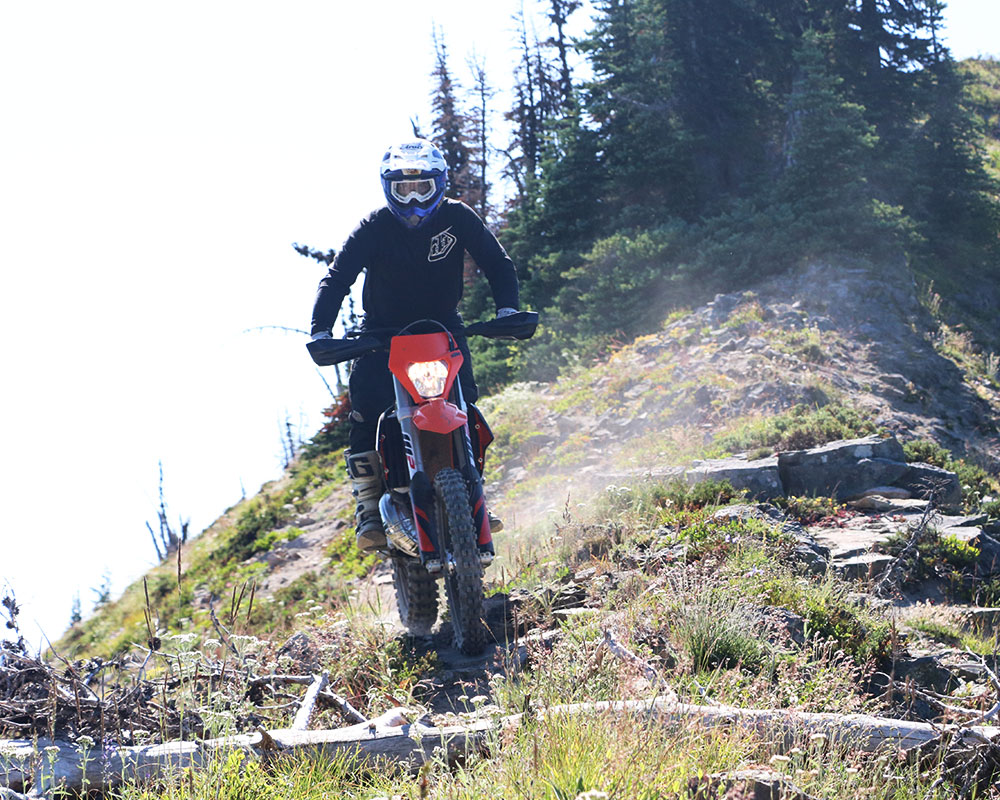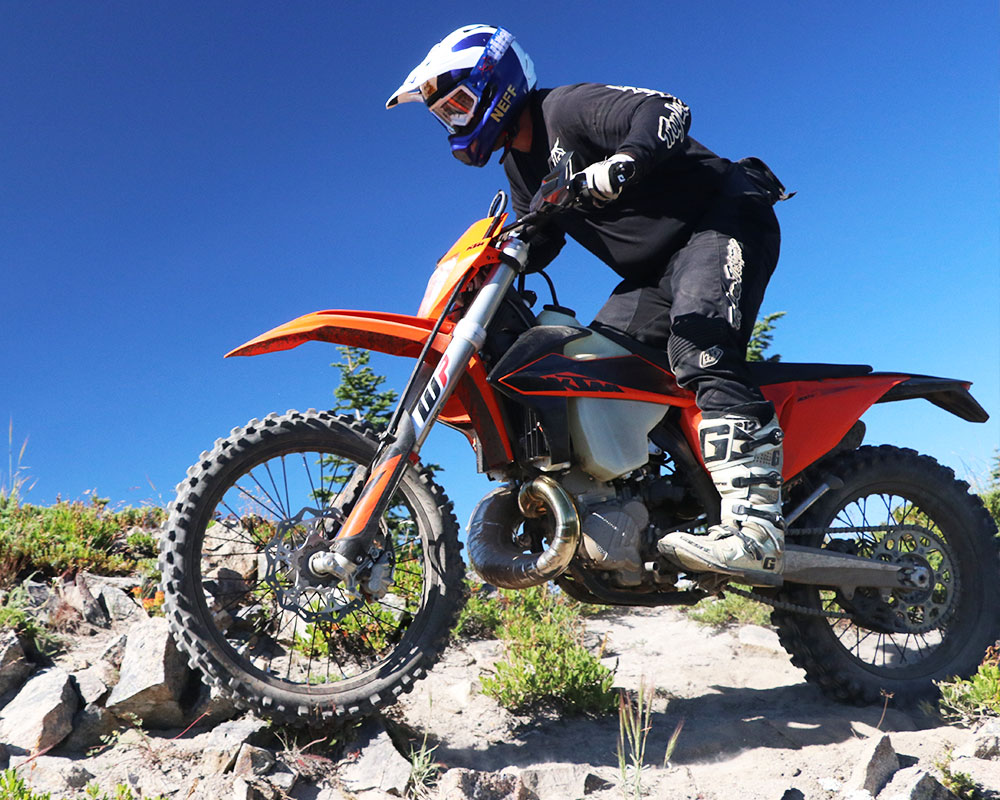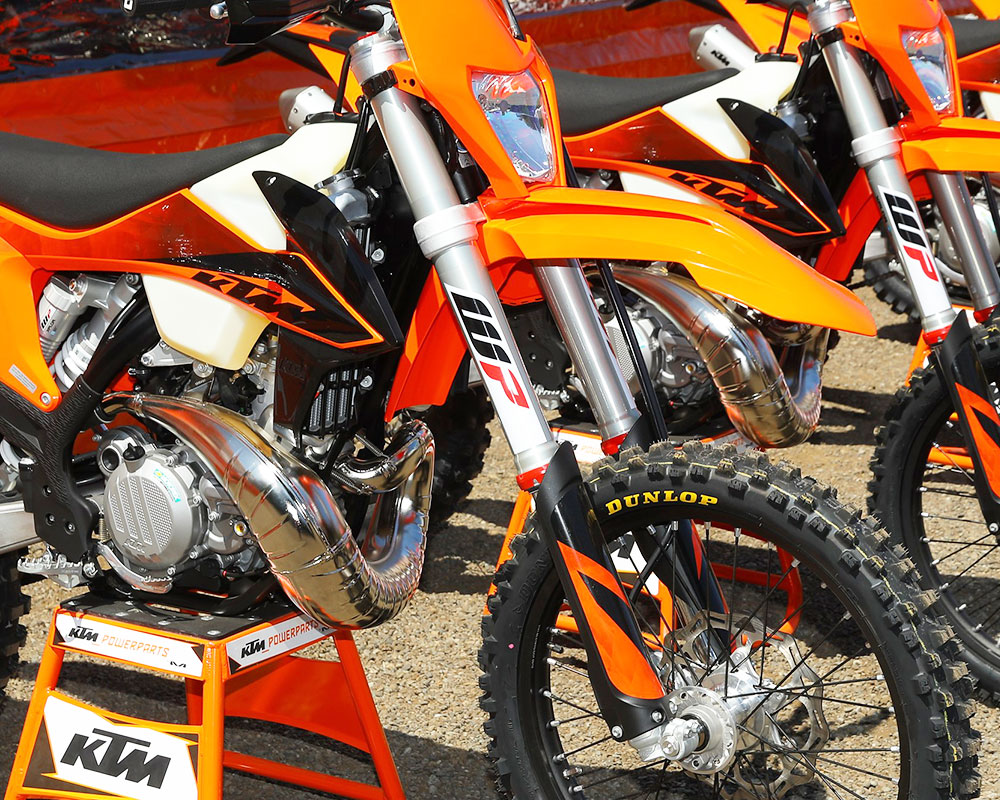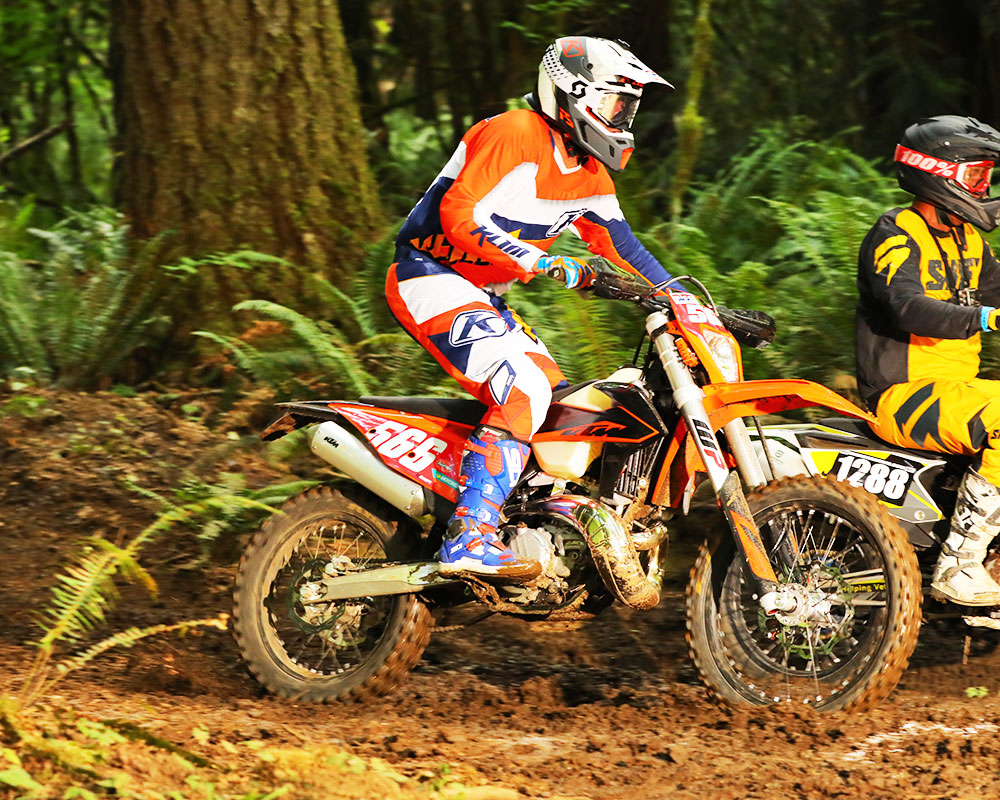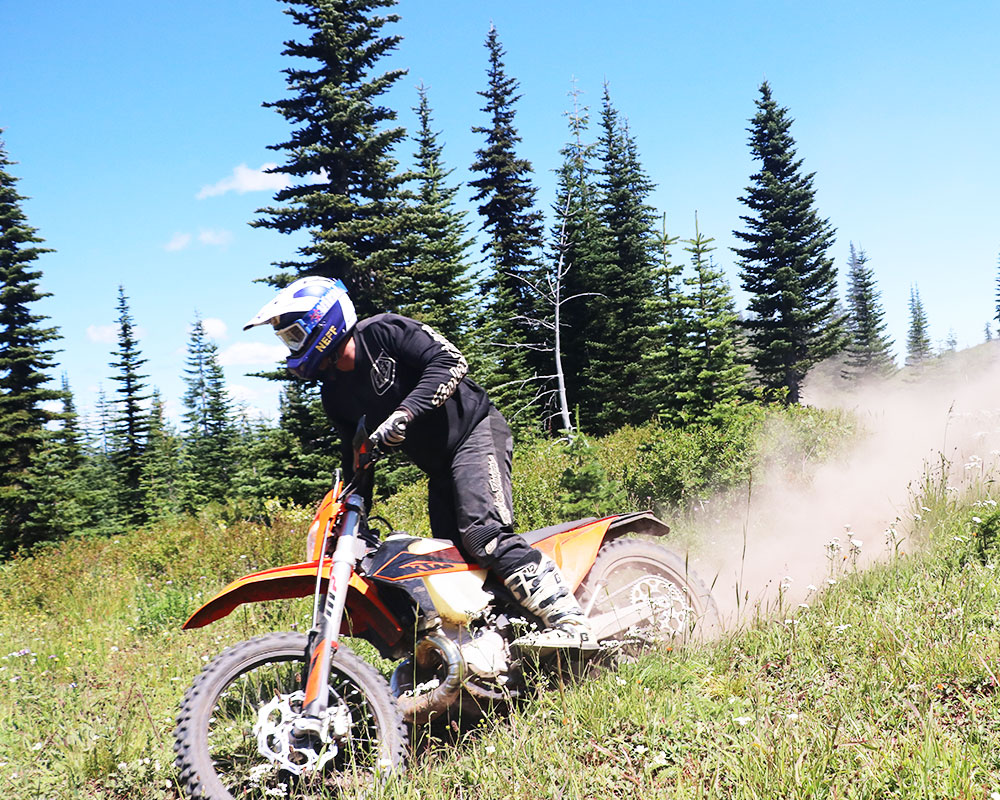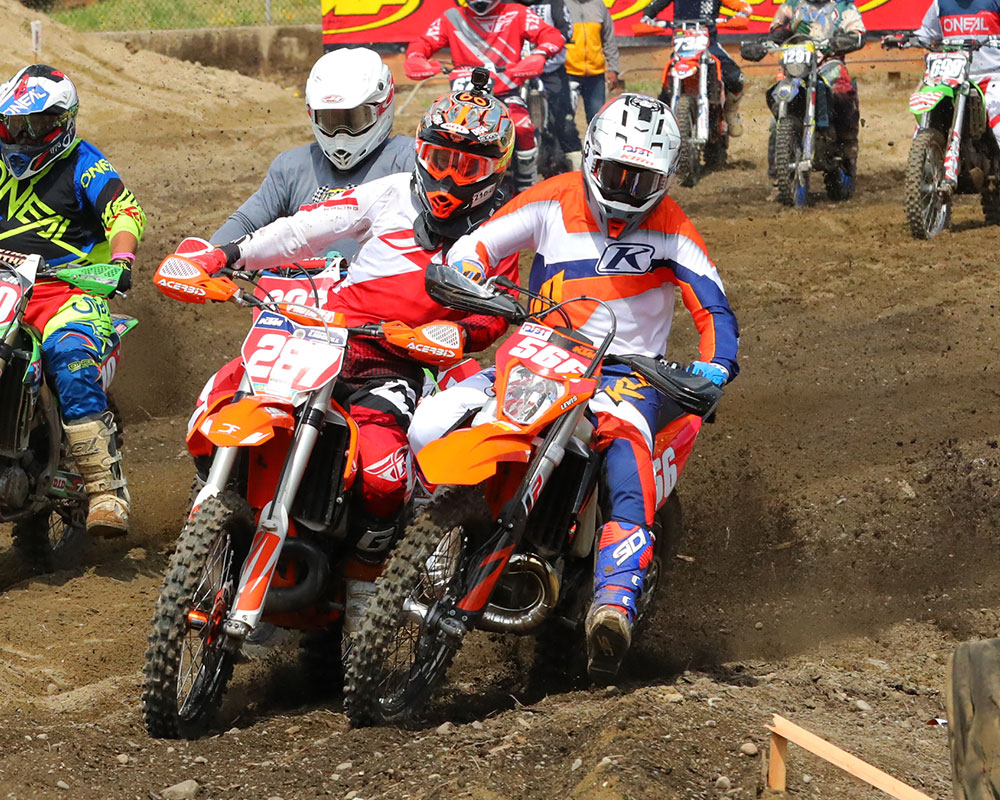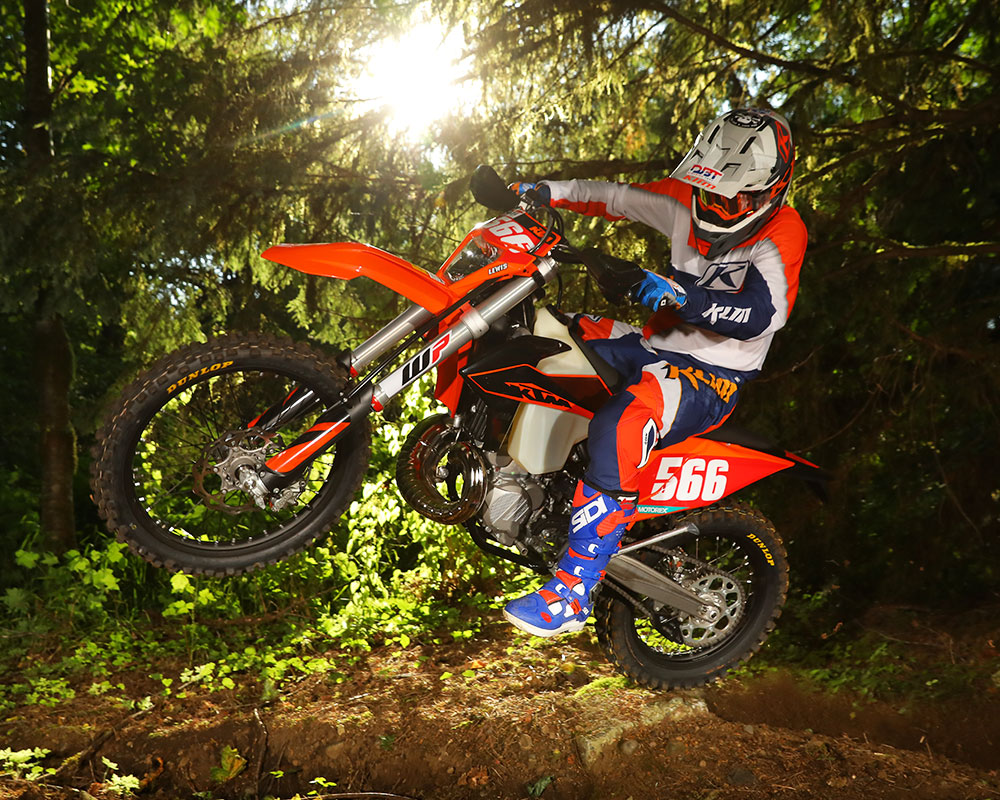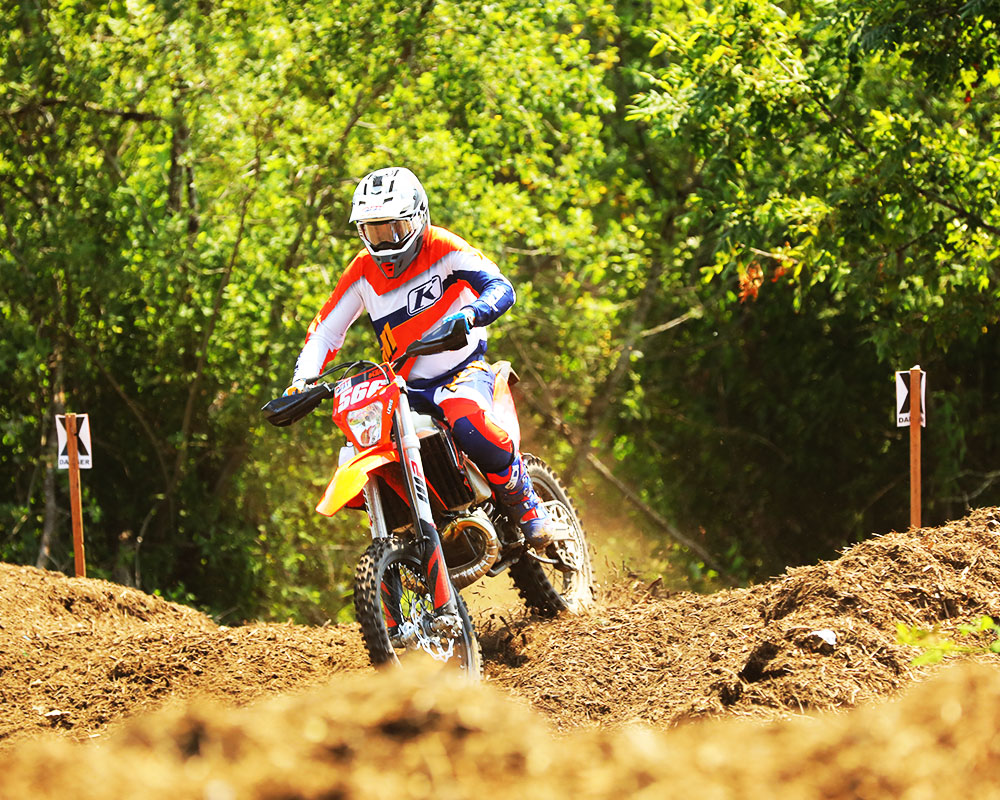2020 KTM 300XC-W
Lean, Mean, Fighting Machine
MSRP: $9999.00
- Light, Powerful, And Potent Race Bike That Is Totally Happy On The Trails
- TPI Fuel-Injection is only getting better. Oil-injection too!
- One of the best suspended and handling bikes on the market.
- We experienced a strange and rare altitude compensation issue with the 300 XC-W.
- Yes, $10,000 a dirtbike.
- Don't ride one if you can't budget one.
Introduction
- The continued evolution of the KTM Two-Stroke.
- Testing the Ready To Race slogan.
KTM has introduced its latest editions of their ‘Ready to Race’ 2-Stroke lineup for 2020. The DirtBikeTest.com (DBT) Team was invited to review, ride, and actually race the new models at the Grays Harbor OHV Park in McCleary Wa. At the conclusion of the formal introduction and racing activities, the DBT team selected the 300XC-W TPI for a full test review on the trails of Washington, Oregon and finally in Nevada. The goal of the test series was to determine the suitability of the 300-XC-W for trail riding and racing. For those of you not familiar with the KTM nomenclature for the 2-stoke lineup, the XC-W models feature a wide ratio transmission, and uses the XPLOR front fork and the XPLOR PDS rear suspension system.
Changes
- Updated ECU and small engine changes.
- New chassis with updated suspension settings.
- Styling and plastic upgrades.
KTM has been continuously developing the 300XC-W from the recent introduction of the new motor with a counter balancer, and the game-changing fuel injection and integrated oil injection system. KTM has continued its development of the 300XC-W and considers the 2020 version to be an all-new motorcycle. The changes include a brand new chassis that rotates the motor downwards one degree to improve front wheel traction.
Significant improvements to the fuel injection system have been made with a new ambient air pressure system mounted externally to the motor. A new exhaust pipe was designed that is ovalized to reduce overall width and includes integrated stiffeners to increase strength and impact resistance. The new silencer has been reworked for better sound damping and enhanced durability. Unfortunately, it does not have a spark arrestor.
The airbox is all new and offers better protection against the elements but still features the no-tools, virtually ‘Bob Proof’, (a term used by the Dirt Bike Test staff), air filter change.
The radiators have been lowered 12 mm to reduce the vertical center of gravity, and incorporate and improved coolant distribution system. Additional plastic energy attenuators were incorporated into the shrouds and radiator fins to reduce the potential ‘drop damage’ to the radiators. KTM also employed Computational Fluid Dynamics (CFD) to improve the overall cooling capability of the 300XC-W.The front and rear fenders have revised I-beam shapes for greater stiffness and the seat can now be removed with one bolt.
Power
- Long smooth and plentiful powerband.
- Slightly more aggressive from years past.
- Some ECU mapping issues may still exist.
Tractable power has always been the hallmark of the 300 series 2-strokes. The 300XC-W is all about traction and pull and has smooth power and plenty of it. For 2020 KTM uses revised mapping to improve the bottom end torque and throttle response to make it more aggressive for the American market, but not motocross aggressive, remember, this bike is all about traction and pull. The ECU has a two maps available that must be changed via a plug, or you use the optional map switch. We used the more aggressive or standard mode almost all the time. The smoother map isn’t necessarily more smooth, it just seems to change how the power builds. Surprisingly, we found the smoother map to be have more snap at a slightly lower RPM, for some even better when riding a gear higher. We wish there was a little more distinction between the two maps. Which map you use will come down to personal preference and it is worth experimenting with.
For those of you that are new to fuel injected 2-strokes, but are are accustomed to the older 300s with carburetors, the TPI system makes the bike feel lean. Make that very lean. We think this is because the bike is running leaner thanks to dramatically improved mixture and oil control provided by the TPI system. Although, at times, we did hear some very light detonation on trailing throttle. As part of the test series we tried 87 octane pump gas, (although maybe doable, definitely not recommended), and experienced slightly more detonation. This pinging is not under a heavy load, where typically it is hard on the piston and cylinder head. In addition, we ran the bike at full throttle (90 MPH !) across a dry lake with throttle chops just to strain it to make sure the lean feeling isn't actually lean to the point of failure. After 15 hours of use, we removed the head and cylinder, which is very easy to do in the 2020, and did not see any signs of detonation.
The new oiling system really spoils the 2-stroke rider. It precisely delivers the oil at all throttle, and engine conditions to ratios that may terrify the older two-stroke crowd. We believe that it significantly varies the oil ratios to between 100 to 1 at low RPM, which helps explain the crisper throttle response, up to 40 to 1 at high speeds. The current average estimate is approximately 80-to 1. We put 300 miles on our 300XC-w during this test series and have yet to see the low oil light illuminate. KTM estimates 5 tanks of fuel before more oil is needed. Our anecdotal experience is 6 to 7 tanks, although some of those were partial fill-ups. Your oil consumption may vary, so act accordingly. And when you peruse the internet and see the horror stories about oil injection failure on these bikes, understand a couple of things. Most were the result of dealers not initializing the oil injection system before the owner first rode the bike. These are the ones that blew up in the first 30 miles. Then the ones where "the bike just locked up" can be categorized under two categories. First is the owner that forgot to fill the oil tank, second is the owner that chose to run his favorite non-synthetic two-stroke oil that was not compatible with the newer system. Trust us, this system is really good as long as you follow directions and you do not need to add extra oil into your tank to make the motor last longer unless you like goop running down your muffler and a pipe filled with carbon.
During testing we experimented with with the adjustable power valve. We have found the power valve on the 300 to be a valuable tuning tool for controlling power delivery. Just like on the older 300s, adjustment of the power valve may require jetting/needle changes. We added a JD Kit Power Surge Fuel Tuner, (JD 6X Power Surge Tuner), to allow us to adjust the mixture on the fly as needed to compensate for the power valve adjustments. Both of the adjustment of the power valve and the use of the JD Tuner are against KTM’s recommendations.
The JD Tuner appears to help compliment the power valve adjustments. As for necessity, we believe It will come down to your personal preference rather than unleashing hidden performance. Consider it as another tool to fine tune to your personal preference. We will provide updates and further test information as they become available. Additional details of the power valve and JD Tuner adjustments, results, and testers comments can be found in the video of the 300XC-w test series at dirtbiketest.com.
One of the disconcerting experiences we had with the motor, which has been a known condition with previous TPI models, is that as you transition from big changed in altitude without stopping the engine, the bike appears to start running lean or rich (but opposite of how a carb would behave). We were able to determine that by stopping the motor and restarting, the ECU would re-calibrate itself to provide the correct mixture at that altitude. We had hoped the new barometric pressure sensor would have helped alleviate this phenomena. Perhaps this was a nostalgic feature for the good old days when the carburetor ruled the world?
During the testing, we developed an immediate work-around that involved stopping the engine and restarting it. This seemed to work well until we went higher, where the process had to be repeated. DBT immediately contacted KTM Engineering to explain the problem and see if they were aware of this and were they working on a fix. Shortly we were informed KTM now has a fix that involves a software update to the engine management system. KTM claims to have installed the software update on all the new bikes at the dealers and can update the early bikes. DBT recommends you contact your dealer for further information.
The wide ratio transmission has as excellent spacing from 1st through 6th gear. First gear, when combined with the TPI system, will let you release the clutch and chug along. Very nice for beginners and the elderly trail rider. If you are racing, 1st gear is not used except in extreme terrain. We know - during the races at the introduction, our very experienced test rider, (1st OA A50, 1st OA A40), accidentally shifted into 1st gear several times and really wish he hadn’t.
The clutch is very good to the point of being magical. It suffered extreme abuse without fading and only made the motor run hot but never to the point of boiling over. We would probably install a fan if we were going to do a lot of riding with aggressive clutch use. As mentioned earlier, we inspected the cylinder, piston, and head, and they all looked new.
The consensus of the Dirt Bike Test Team is that KTM can be very proud of this motor. And don't forget the counter-balancer which adds a whole another level of love for this engine family, something that jumps right out at you if you ever have to ride an older 300.
Suspension
- WP XPLOR components are some of the best in the business.
- New settings really are improved.
- Adjusters work and expand the use for multiple tasks,
The 2020 300XC-w uses the WP XPLOR fork and the WP XPLOR PDS rear suspension system. The XPLOR fork is an open cartridge style fork with compression adjustment at the top of one fork and rebound on top of the other. The open cartridge fork, when compared to a closed cartridge fork, tends to have a reduced breakout force, which makes the fork more subtle over roots and rocks at low speeds. Plus it is less complicated and less expensive overall. The fork settings were refined for 2020 and now hold the front end higher in the stroke than previous editions. The XPLOR PDS system in the rear continues to run a progressive spring and has had the valving refined to reduce bottoming and enable the rear suspension to ride higher in the stroke.
This is currently the best stock suspension on any motorcycle we have ever ridden for its intended job description and that is a very telling statement. This includes the tight rocky, technical trails in Washington and Oregon, as well as the ever-enjoyable high speed rocks and whoops of Nevada. And to top it off, racing in a WORCS GP-style event without much more than setting the sag.
With a few clicks of the adjusters the bike worked very well in a grand-prix situations and equally well on any of the trails ridden during this test series. The stock springs were able to accommodate our robust tester in all of the tested conditions. The adjusters, specifically the compression on the fork, really acts more like a mid-speed valve and controls the ride height of the front end much like the high-speed compression adjuster on the shock. Additional detailed observations and recommendations on the suspension can be found on the test video at dirtbiketest.com.
Chassis - Handling
- Light feel, even less than the scale says!
- Stability, agility and always confidence inspiring.
- KTMs easy to work on build makes simple work of regular tasks.
The 300EXC exhibited some unique handling characteristics when compared to conventional 2-strokes. Not only is this bike light and ‘flickable’ like all two -strokes, it also feels planted, unlike a 2-Stroke. Really. This planted feeling is one of the features that 4-Strokes have had over 2-Strokes since, well, forever. It usually comes with weight, but this bike at 241 pounds full of 2.2 gallons of fuel, is light. The tires feel like they are staying on the ground, any ‘dancing’ is all but gone. With the stock Dunlop AT81 tires set to 12 psi the 300XC-W delivers excellent traction and pull with no dancing. If you run higher tire pressures you may experience some movement but that should be able to be reduced with careful fork and shock adjustments.
To put it simple this bike turns as quick as anything and remains stable. It has a light feel in the handlebar and responds well through the pegs. It makes just about any bike feel heavy and a lot of them sluggish. As a direct comparison it feel like a KTM 200 with double the horsepower and all of the smaller bike's control.
The new roomy chassis and updated suspension make the 300XC-W a very pleasant ride with working on the bike an even more pleasing experience. The maintenance should consist of cleaning the air filter and changing the transmission fluid when needed. Those tasks are easy and we'd suspect a rider could easily get 100-150 hours out of a top end before even needing to think about it. One bolt will get you into the battery area by removing the seat. And the sub-frame and fender attachment seems more robust than in the past as well.
Our bike had great brakes, strong yet progressive in feeling with excellent adjustability in positioning. The bars have position adjustability which we did not feel the need to alter. Handguards are a nice touch and a skid plate would have been a good addition and some of the bikes may even come with them (the 150 does) yet ours did not. In falls the bracing on the radiator louvers helped keep them straight but bigger hits will do damage. The electric starter never faltered and the bike started quick no matter the temp or altitude in our testing. Even the seat has nice foam and excellent comfort and grip, something that seems to evade the KTM compliment list quite often
We were getting anywhere between 33-40 MPG on the bike, surprisingly at higher speeds the efficiency went up quite a bit. We'd budget 50-miles easy on a tank for most racing-like conditions and 60-65 for trail riding.
Conclusion
The KTM XC-W carries over all the traditional KTM features and performance we have come to enjoy. This is a bike where your main maintenance event will be cleaning the air filter, followed by changing the gear oil, and making sure to add oil to the remote engine oil system. We still haven’t had to tighten the spokes after 15 hours/300 miles. However we did have to adjust the chain, which is unusual for us on the KTMs.
The 2020 bike has a headlight that is actually usable at night. Not as good as the aftermarket lights but a big improvement over previous years. The new roomy chassis and plastic configuration enabled us to remove the cylinder head in about ten minutes. Very nice.
For us, it really looks like KTM has made a serious effort to improve this bike with the rider in mind, not to rest on their laurels and just bang out product. Is this bike ‘Ready To Race’? Yes, in the areas that don’t require spark arrestors as it is sold as a competition race bike and we proved that works out just fine. The 300XC-W has also proven to be a very user-friendly and fun trail bike for all skill levels of rider.
In conclusion, we must strongly recommend that if you own an older 300 KTM, and like riding in different terrain and conditions, and do not have the asking price ($10k) at hand, do not ride the 2020 300XC-W. Yes, it is that good.
There is more information and recommendations on the 300EXC-W videos at dirtbiketest.com
https://youtu.be/P0K5Ml03X-U
https://youtu.be/0d5M-UUSgeg
https://youtu.be/_nP-EuZZQbU
Support DBT, Shop and search for products through the link below:
Recent Product Tests
What Others Said

https://www.dirtrider.com/2020-ktm-300-xc-tpi-first-ride-review/

https://www.youtube.com/watch?v=5wqsaE5xCeI
Leave a Reply
